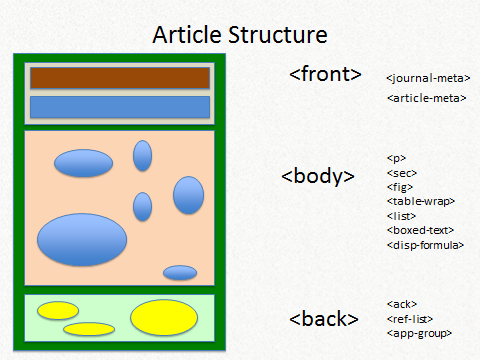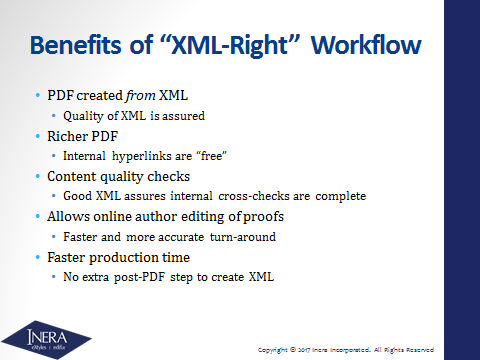Moderator:
Tony Alves
Director of Product Management
Aries Systems Corporation
North Andover, Massachusetts
Speakers:
Jeffrey Beck
Technical Information Specialist
National Center for Biotechnology Information
Bethesda, Maryland
Chandi Perera
CEO
Typefi
Melbourne, Australia
Bruce Rosenblum
CEO
Inera Incorporated
Belmont, Massachusetts
Reporter:
Tony Alves
Director of Product Management
Aries Systems Corporation
North Andover, Massachusetts
Journal Article Tag Suite (JATS) is an eXtensible Markup Language (XML) format used to tag scientific literature published online. It is a technical standard developed by the National Information Standards Organization (NISO) and was originally developed by the U.S. National Library of Medicine for archiving and interchange of scientific information. The Book Interchange Tag Suite (BITS) is the “book” version of this XML format, and though it is not yet an approved standard, there is increasing interest in adopting BITS for book-related workflows. Both JATS and BITS XML are important standards used for passing metadata and full-text journal and book content throughout the scholarly publishing ecosystem. This session started with an overview of JATS and BITS, including the history, the XML structure, and other basic facts about these XML formats.
Jeffrey Beck, a Technical Information Specialist from the National Center for Biotechnology Information, part of the National Library of Medicine, began a detailed overview of JATS and BITS by defining terms such as XML and Document Type Definition (DTD). Beck then walked the audience through an example of JATS, pointing out and describing the various sections of the marked-up document. Beck diagrammed a typical document, relating parts of the article back to the XML version (Figure 1). Finally, Beck reviewed BITS in a similar way, comparing and contrasting the differences between a book model and a journal article model.

Chandi Perera, CEO of Typefi, a provider of automated publishing software, asked the question, “Why use JATS and BITS?” He started by discussing the fact that all the largest publishers had invested in their own proprietary XML standards 15 years ago, whereas smaller publishers could not afford this luxury. This created a problem for vendors who provided publishing and distribution services. Perera focused on how JATS and BITS can increase publication efficiencies and reduce costs, especially for smaller organizations that do not have the resources to create tools and systems in house but instead rely on partners to build and operate publishing systems and services (Figure 2). Perera discussed three organizations that experienced workflow improvement, higher production volumes, and decreased production time using JATS and BITS during the production process.

Bruce Rosenblum, CEO of Inera Incorporated, a provider of automated editorial and XML solutions for Microsoft Word, reviewed the considerations and preparation required to bring XML workflows into an organization’s processes. Rosenblum laid out a realistic vision for XML’s place in various parts of the process, from online XML authoring to post-publication XML conversion issues. He reviewed the “author reality,” which includes many obstacles to imposing a structured process, such as entrenched habits, fear of technology, and the variety of tools used by researchers in preparing scientific reports. Rosenblum compared four XML workflows, outlining their advantages and disadvantages. He wrapped up his talk with detailed look at the importance of XML quality and how good XML can significantly improve workflows and the final published product (Figure 3).

Links:
